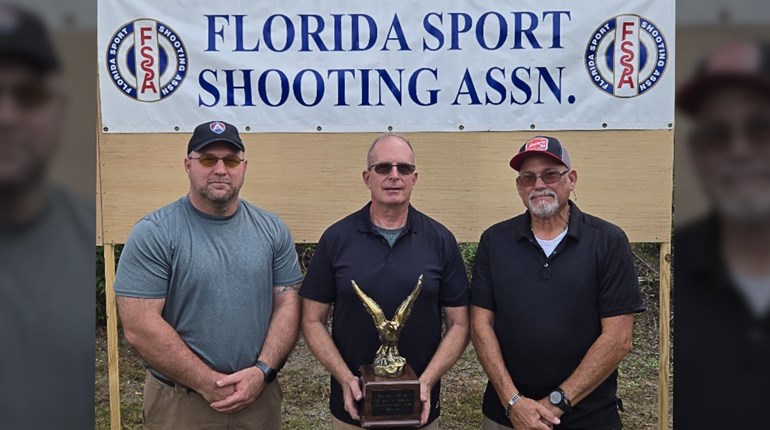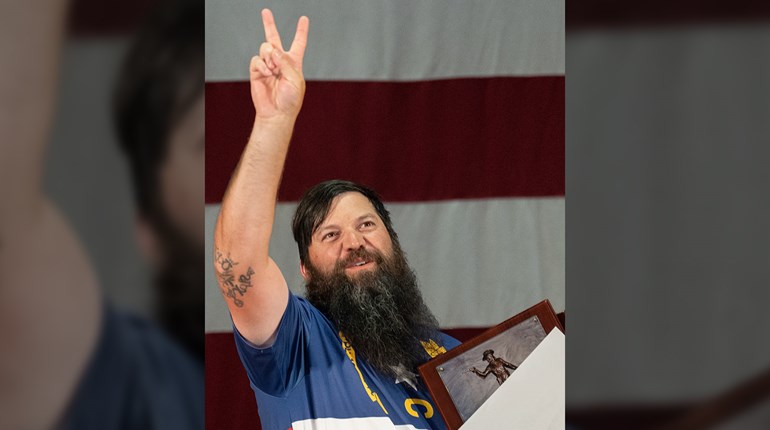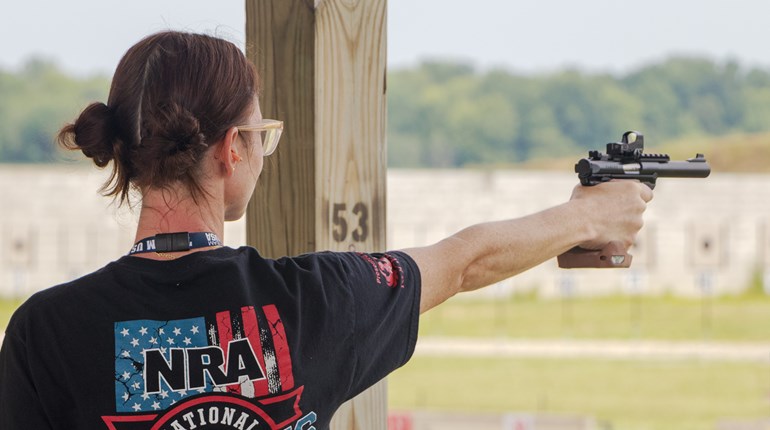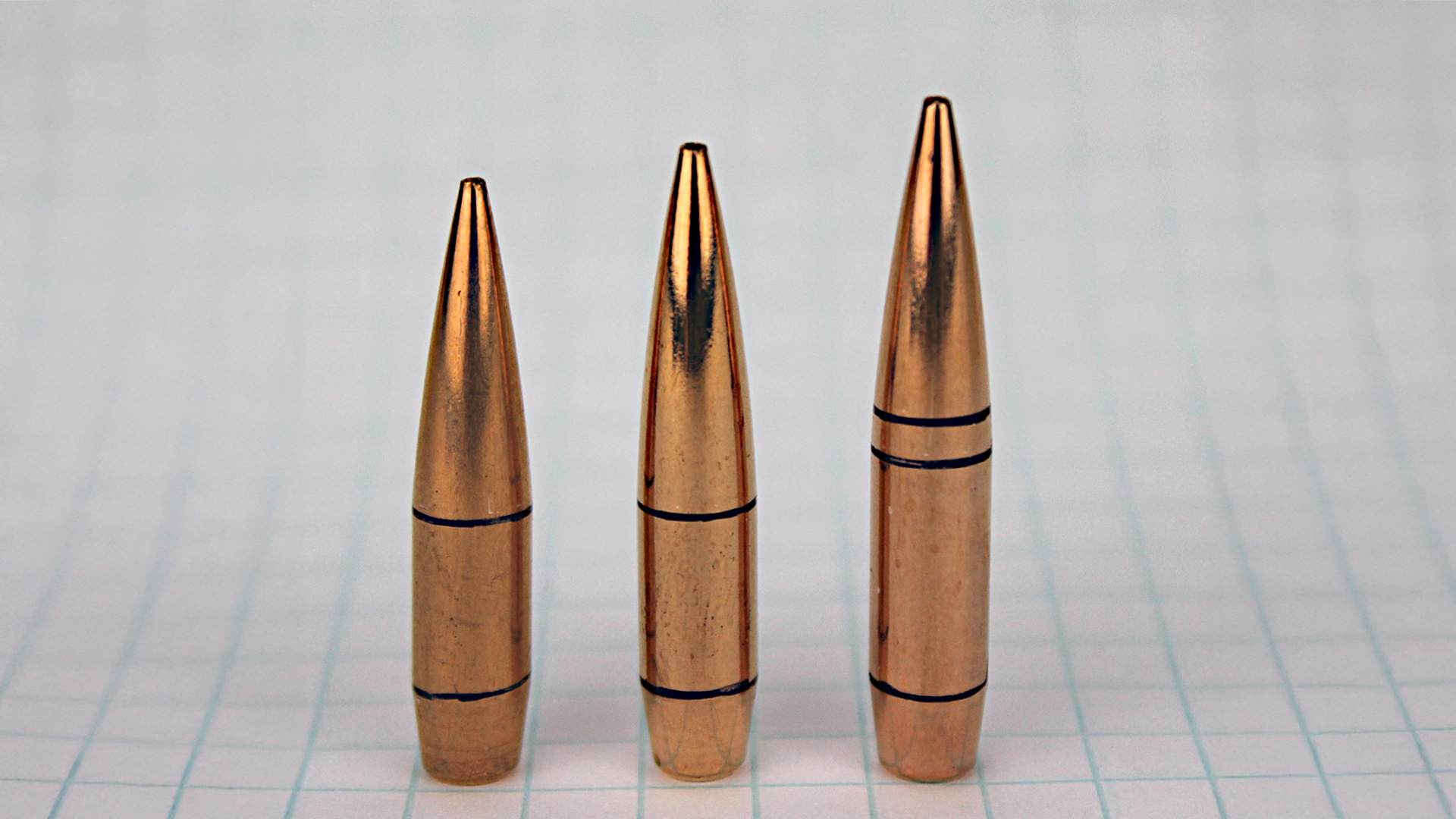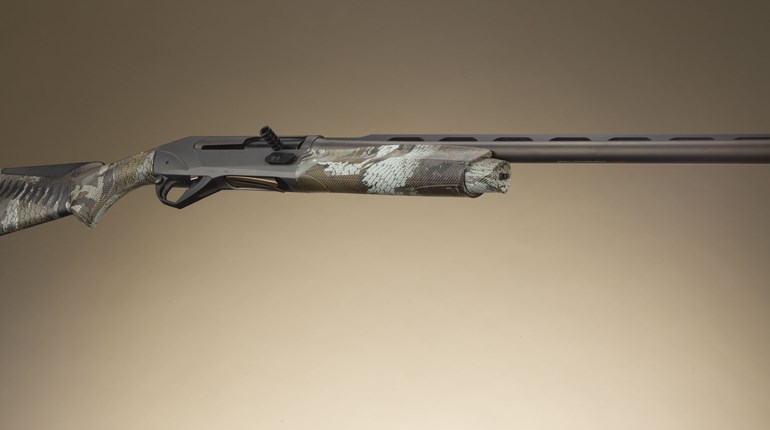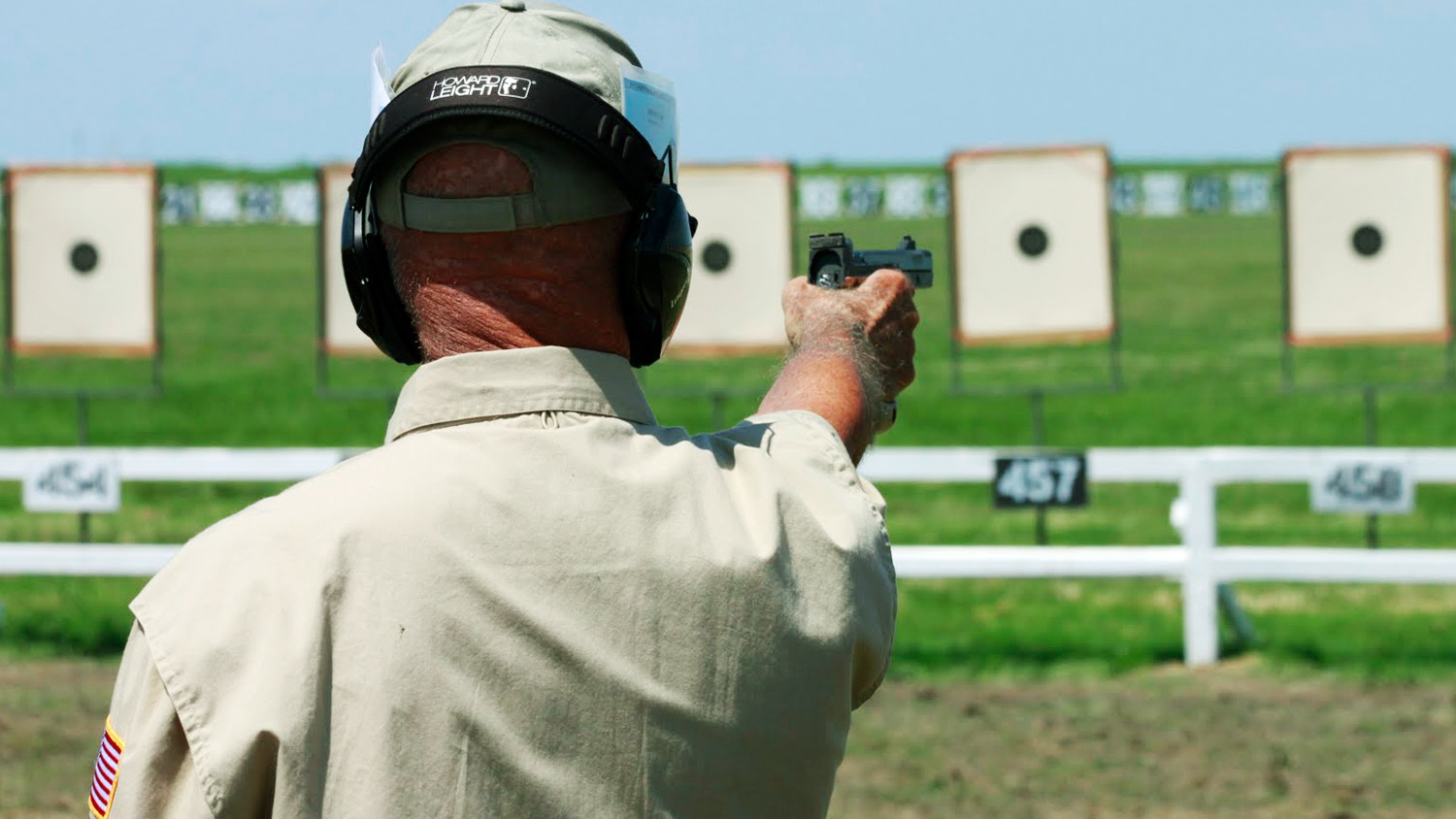
Our panel included national champions, national record holders, Olympic-caliber shooters and shooters who are on top of their game. All are high masters (except for two masters) and are also Distinguished.
Question: Do your shot groupings change when shooting under the open sun?
Don Nygord was a member of the U.S. shooting team for over 20 years and wrote extensively during 1998-2003. Many of his articles can be found at this link: www.australiancynic.com/NYGORD.htm. Nygord’s notes indicate that if the sun is shining from the right, then the front sight blade will be “blurred” on the right side. This will cause the right side to appear thinner, and the apparent gap between the rear sight notch and front blade will be wider. When the sights are realigned, errant shots will go to the right.

Surprisingly, two distinct schools of thought emerged from the survey. There were a total of seventeen responders. Eight responders reported never needing to change their sights for windage due to sunlight. We’ll call them group 1. Eight others (group 2) reported that they did routinely change sights for windage as a result of bright sunlight. The 17th shooter was not sure.
Those in group 2 who adjusted their sights to the prevailing light conditions typically moved their rear sight windage by 1 to 3 clicks. Four of this group used up to five clicks under more extreme conditions. Nobody from group 1 saw the blurred front sight edge mentioned in Nygord’s notes. One from this group commented: “I know that the sunlight directionality can affect the perceived appearance of the BULL and thus cause one to compensate with the iron sights in just the OPPOSITE way of your example ... light on the right will cause you to shoot left.” From group 2, only two responders noted a blurred front edge on the same side as the sun, while another from this group saw a blurred front sight, but on the “opposite” side of the sun.
Apertures at the National Matches
None in group 1 used an aperture. Of the eight in group 2, four used an aperture, while three did not. One used it sometimes.
Sight black
The carbide type was most prevalently used by both groups. Shooters from group 1 used either carbide or aerosol sight black. Six from group 2 used carbide, while one used aerosol, and another sometimes used either type. Brian Zins wrote, “A cigar lighter is great.”
Here are some responses from group 1 (no change in windage due to shifting sun):
Jim Lenardson: (Last shooter to win the National matches with iron sights.) I shot iron sights for 30 years as a high master. I shot 2670 several times with them and never had the sights change with the sun. I am well aware of folks talking about that, but I never had a problem with it. It always came up at Perry because of facing the North and no over-head cover. Some were adamant about it and others thought it made no difference.
Brian Zins: The biggest thing I notice when shooting irons outdoors is the sunlight’s effect on elevation more than anything. I feel it is due to the sun on the target more than on the sights. The rifle shooting phrase “lights up, sights up” is kind of the same effect that Don Nygord talks about concerning the front sight.
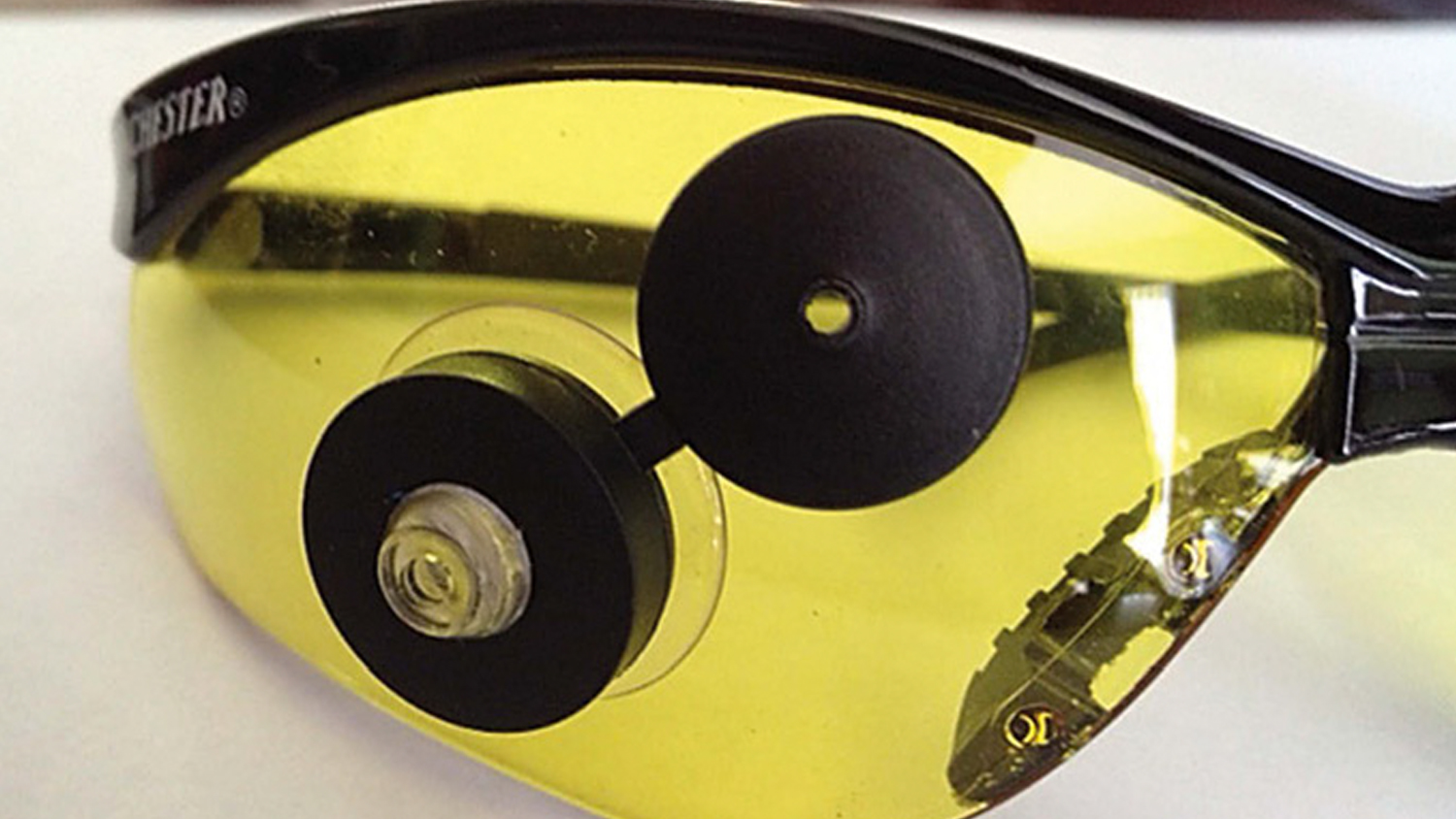
Dave Lange: I very rarely have to make sight corrections. I have heard the comments at Perry about how the sun changed between the President’s 100 match and the NTI and NTT matches. I have never noticed this in my sights.
John Bickar: (As a multinational junior champion, Bickar shoots iron sights exclusively.) I’ve heard the “lights right, sights right” adage but have not found it definitively to be the case.
Chris Johnson: I have not noticed shot groupings move with light conditions. Specifically, shooting ball at Camp Perry at 7:00 am then again at 11:00 am does not move my groupings.
Here are some responses from group 2 (windage changed due to shifting sun):
Philip Hemphill: (10-time National Police Shooting Champion and 2-time National Precision Pistol Champion) My eye doctor here in Mississippi gets a little uneasy when I bring my guns into his office for sight picture correction, but I have found that is the only way I can get a correct adjustment for vision. I have been shooting iron sights in police matches for decades and have found that the glare on the front sight has more bearing on shot placement than the effect of the sun. Our range faces north, while the range at Jackson Police Department (PD) faces south. I have to move 2 clicks left and 1 click down when I shoot at the Jackson PD. The sun was on my left side over there. The sun has a tendency to push me away from the target.
John Zurek: I often shoot iron sights while training with the Free Pistol. Here in Phoenix, our club is situated so that I am shooting south. When I start a training session, normally I have rounds going down range by 8:00 a.m., when the sun is coming up on my left. In that light, my grouping is to the left. As the sun centers overhead, my grouping is centered. When I train in the afternoon, my group moves to the right. (I’m shooting for groups in these sessions, rather than adjusting the sights.) My theory has been that the sun shines on that part of the front sight (left or right) causing a graying effect, which makes the mind move the sights in that direction to make up for the apparent gap.
I also note that bright light shining on the target gives the appearance of an elongated bullseye, opposite from the sun (sun’s up, sights up). When one is focused on the sights, the “black thing” downrange is blurred to the left or right, due to the sun’s position.

At Camp Perry, the President’s 100 match usually starts at 0700 hours with the sun low on our right side. I adjust two clicks left. During the NTI later in the morning, I take out these two clicks. In the afternoon team matches, I adjust two clicks to the right, as long as there is still direct sunlight. Overcast conditions usually are the same for me as shooting from a covered firing line.
Col. Joe Chang: My iron sights always have been different than other shooters. When I pick up someone else’s ball gun, I wind up shooting high into the 8-ring. I use a serrated front sight and sometimes I do see the front sight being more gray than black. This may be due to reflections from the front sight which might distort the way I see it. Rather than over-analyze it, I adjust my sights to center my group.
Summary
I wish to thank everyone for their replies and sharing their expertise. With no disrespect to others who have different viewpoints, this was how our shooters saw their sight picture. Of interest, the six national champions all belong to group 1 and saw their front sights with no edge blur; no report of edge glare; all used either a black or white occluder (one shuts the eye), and none used an aperture.
As an optometrist reviewing these responses, there were no conclusions I could offer from the use of plus add power lenses, tints, anti-reflection coatings or apertures. Peoples’ perceptions vary. In general, my recommendation has always been to obtain the best focus for the front sight, followed by the rear sight and then the bull. How “blurred” is considered acceptable can be shown by your eye care professional.













